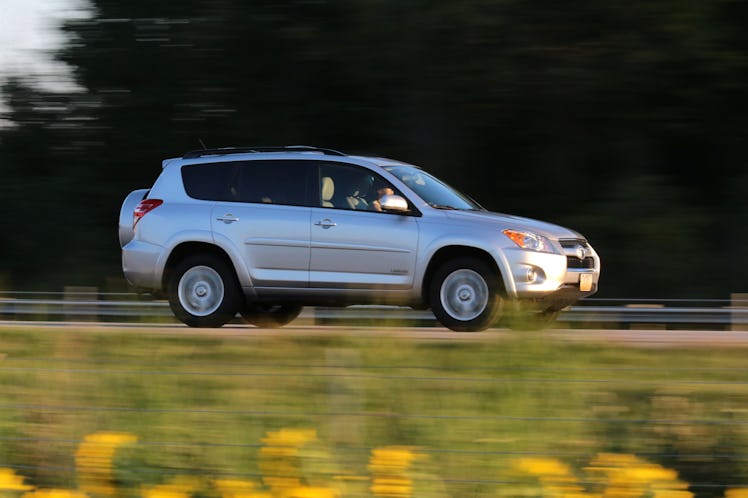SUVs Way More Likely To Kill Kids Than Other Cars, Study Shows
SUVs were the striking vehicle in only 16.9% of crashes involving children but were responsible for 40% of fatalities.

Huge SUVs are a common sight on roads across the country, having grown in popularity over the past forty years as an alternative to minivans for families. But despite their convenience as family taxis, grocery-hauler, and recreational vehicle tow-er, a new study shows that America’s favorite vehicle has a terrifying downside (besides their large carbon footprint and fuel inefficiency). Turns out, SUVS, statistically, are less safe for kids than other cars.
For the study, researchers analyzed crash and hospital data collected in Illinois from 2016 through 2019. The researchers, funded by the Centers for Disease Control and Prevention and the Illinois Department of Public Health, compared the types of vehicles involved in pedestrian and cyclist strikes with injury and fatality records. They found that although SUVs aren’t the most common vehicle type involved in pedestrian and cyclist strikes, this type of car causes the most severe injuries and fatalities, especially when the victim is a child.
The study, published in The Journal of Safety Research, found that passenger cars were the striking vehicle in 62% of accidents involving pedestrian or cyclist children but resulted in only 19% of fatalities. In comparison, SUVs were the striking vehicle in only 16.9% of crashes involving children but were responsible for 40% of fatalities.
All signs point to the mega-vehicles just being too big. Due to the size of SUVs, drivers’ visibility is more limited than in smaller, more practical vehicles. Many times, drivers simply cannot see what or who is in the immediate area around the vehicle. That large size and heavy weight may also contribute to more pedestrian injuries and fatalities, making lighter passenger cars the safer alternative for pedestrians.
To address the rising tide of pedestrian- and cyclist-involved accidents and deaths, the National Highway Traffic Safety Administration (NHSTA) announced that it would reevaluate how they rate a vehicle’s overall safety. The New Car Assessment Program (NCAP) currently rates vehicle safety on how crash test dummies fare after a variety of controlled accidents. Safety ratings are given on a one- to five-star scale, with five being the highest rating achievable. Current testing does not take into account pedestrians or cyclists who may be involved in an accident, only how the occupants of the vehicle weather the crash.
More than 6,500 pedestrians were killed by motor vehicles in 2020, 3% of which — 177 of them — were children. Of the nearly 1,000 pedalcyclist traffic fatalities in 2020, 48 of the victims were children.
President Biden’s new bipartisan infrastructure plan addresses the rise in pedestrian and cyclist deaths. The plan requires all new vehicles to include “forward-collision warnings, automatic emergency braking, and lane-keep assistance” and asks that the overhauled New Car Assessment Program’s five-star safety rating system include those features in its rating system.
“This paper has demonstrated the high cost of large motor vehicles on pedestrian and cyclist injury severity, fatalities, and hospital [visits],” study co-authors Mickey Edwards and Daniel Leonard wrote. “And once more, the most vulnerable among us seem to bear the greatest burden.”